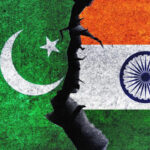In general, India could still be in a sweet spot if there is political change and a new administration in the U.S.
With U.S. Democratic candidate and former Vice-President Joe Biden seizing the lead in the presidential elections that puts him at the cusp of victory, the attention in India turns to what kind of foreign policy changes he will bring to India-U.S. relations. A bit of history may hold some clues. In September 2009, U.S. President Barack Obama had tasked his Vice-President, Joseph Biden, with building an alternative plan to Afghanistan, to present to U.S. Generals who were pushing for the “surge” or an influx of up to 400,000 troops to win the war in Afghanistan. Mr. Biden fought long and hard, building on multiple visits to the region, and suggested that the U.S. did not need more troops; instead it needed to pull out, and focus on a five-point agenda for what he called “Counter-terrorism Plus”. The details, as recounted by veteran journalist Bob Woodward in his book, Obama’s Wars, included a full focus on al-Qaeda, exiting other counterinsurgency missions and dropping the Bush era “nation-building” theme, reducing U.S. bases to just two or three, and fighting the Taliban with a view to bringing them to the table for reconciliation. On Pakistan, a country that gave him one of its highest civilian honours, the Hilal-e-Pakistan, Mr. Biden favoured a policy of engagement in order to deal with the Taliban.
Eventually, Mr. Obama did not go with the Biden plan, and ended up with following the military’s plan for a surge of about 33,000 extra troops instead. A decade later, it was President Donald Trump who picked up ideas similar to the Biden plan, when he ordered a large-scale pullout of U.S. troops, limited U.S. presence at bases and its mission in Afghanistan, while appointing Zalmay Khalilzad to build a reconciliation process with the Taliban. While the relative merits of the different American strategies on Afghanistan will be judged in the future, what this shows is that the specific policies of Mr. Biden and Mr. Trump in the international arena may not differ as much as their political styles and their ideologies do.
Roots in the Obama-Biden era
For India, this would mean some comfort in the continuity a Biden administration will show over the U.S. policy with India, strategic and otherwise. While Mr. Trump owned the Indo-Pacific policy later, the policy owes its origins to the Obama-Biden administration that first focused on “Asia-Pacific” in order to build a coalition to counter Chinese inroads in the region: during his visit to New Delhi in 2015, Mr. Obama signed the first India-U.S. vision statement on the subject.
He may not, however, pursue the head to head, brinkmanship style Mr. Trump and U.S. Secretary of State Mike Pompeo preferred. It is also likely that Mr. Biden will build on the military foundational agreements with India, strengthen military cooperation and push the sale of U.S. military hardware.
When it comes to trade, it is unlikely that Mr. Biden can dial back many of the measures that Mr. Trump has put into motion, but he would have low hanging fruit to pick, if he chooses to be more flexible, in restoring India’s Generalized System of Preferences (GSP) status for exporters, and in wrapping up a mini-trade deal that the U.S. Trade Representative Robert Lighthizer and Commerce Minister Piyush Goyal have been working on, but without success thus far. On visas, Mr. Biden gave Indian-Americans some assurances at a campaign speech last month, and he already has an in-house understanding of the value of Indian immigrants to the U.S., and the importance of India’s outsourcing industry to the U.S., through his running mate Kamala Harris.
Friction areas
Where there is likely to be some friction with the Modi government, especially given India’s pending review by the U.S. Commission on International Religious Freedom, is where the Democratic Party leadership, including Ms. Harris, Mark Warner, Pramila Jayapal, have been particularly vocal: Jammu-Kashmir, the Citizenship (Amendment) Act, communal and caste-based violence, actions against non-governmental organisations and media freedoms. These are areas Mr. Trump ignored for most part, but are areas where Mr. Biden once said the U.S. “admired” India the most.
In a speech in 2013 during a visit to Mumbai, Mr. Biden had said: “We admire the way you’ve melded ethnicities, faiths and tongues into a single, proud nation; the way entrepreneurship seems almost hard-wired into Indian society, from rickshaw-wallas to web programmers; and maybe most of all, we admire your democracy and the message that your democracy sends to people everywhere in the world.”
Ground Zero | The importance of being Indian in America
International outlook
Above all, Mr. Biden’s foreign policy will be watched for just how much he reverses Mr. Trump’s pullout from the multilateral world order, including the World Health Organisation, UNESCO, Human Rights Council, agreements such as the Joint Comprehensive Plan of Action, the Iran nuclear deal and the Paris Climate Accord and traditional trans-Atlantic and trans-Pacific alliances. He will also be watched for what concrete measures he takes in order to strengthen the rules-based international order, and to ensure the countries that flout it the most, including China, Russia, and even the United States are held to account.
New Delhi might not miss Mr. Trump’s abrasive, transactionalist style that puts a premium on personality over policy, but it had learned to embrace the “new normal” of the Trumpian era, as the two public rallies Mr. Modi invited Mr. Trump to, in Houston and Ahmedabad, showed. The success of the government’s dealings with Mr. Biden’s administration now depends on how much of the “old normal” the Modi government is able to revert to and find comfort over the next few months.
Biden, India and comfort in the old normal
In general, India could still be in a sweet spot if there is political change and a new administration in the U.S.
With U.S. Democratic candidate and former Vice-President Joe Biden seizing the lead in the presidential elections that puts him at the cusp of victory, the attention in India turns to what kind of foreign policy changes he will bring to India-U.S. relations. A bit of history may hold some clues. In September 2009, U.S. President Barack Obama had tasked his Vice-President, Joseph Biden, with building an alternative plan to Afghanistan, to present to U.S. Generals who were pushing for the “surge” or an influx of up to 400,000 troops to win the war in Afghanistan. Mr. Biden fought long and hard, building on multiple visits to the region, and suggested that the U.S. did not need more troops; instead it needed to pull out, and focus on a five-point agenda for what he called “Counter-terrorism Plus”. The details, as recounted by veteran journalist Bob Woodward in his book, Obama’s Wars, included a full focus on al-Qaeda, exiting other counterinsurgency missions and dropping the Bush era “nation-building” theme, reducing U.S. bases to just two or three, and fighting the Taliban with a view to bringing them to the table for reconciliation. On Pakistan, a country that gave him one of its highest civilian honours, the Hilal-e-Pakistan, Mr. Biden favoured a policy of engagement in order to deal with the Taliban.
Eventually, Mr. Obama did not go with the Biden plan, and ended up with following the military’s plan for a surge of about 33,000 extra troops instead. A decade later, it was President Donald Trump who picked up ideas similar to the Biden plan, when he ordered a large-scale pullout of U.S. troops, limited U.S. presence at bases and its mission in Afghanistan, while appointing Zalmay Khalilzad to build a reconciliation process with the Taliban. While the relative merits of the different American strategies on Afghanistan will be judged in the future, what this shows is that the specific policies of Mr. Biden and Mr. Trump in the international arena may not differ as much as their political styles and their ideologies do.
Roots in the Obama-Biden era
For India, this would mean some comfort in the continuity a Biden administration will show over the U.S. policy with India, strategic and otherwise. While Mr. Trump owned the Indo-Pacific policy later, the policy owes its origins to the Obama-Biden administration that first focused on “Asia-Pacific” in order to build a coalition to counter Chinese inroads in the region: during his visit to New Delhi in 2015, Mr. Obama signed the first India-U.S. vision statement on the subject.
He may not, however, pursue the head to head, brinkmanship style Mr. Trump and U.S. Secretary of State Mike Pompeo preferred. It is also likely that Mr. Biden will build on the military foundational agreements with India, strengthen military cooperation and push the sale of U.S. military hardware.
When it comes to trade, it is unlikely that Mr. Biden can dial back many of the measures that Mr. Trump has put into motion, but he would have low hanging fruit to pick, if he chooses to be more flexible, in restoring India’s Generalized System of Preferences (GSP) status for exporters, and in wrapping up a mini-trade deal that the U.S. Trade Representative Robert Lighthizer and Commerce Minister Piyush Goyal have been working on, but without success thus far. On visas, Mr. Biden gave Indian-Americans some assurances at a campaign speech last month, and he already has an in-house understanding of the value of Indian immigrants to the U.S., and the importance of India’s outsourcing industry to the U.S., through his running mate Kamala Harris.
Friction areas
Where there is likely to be some friction with the Modi government, especially given India’s pending review by the U.S. Commission on International Religious Freedom, is where the Democratic Party leadership, including Ms. Harris, Mark Warner, Pramila Jayapal, have been particularly vocal: Jammu-Kashmir, the Citizenship (Amendment) Act, communal and caste-based violence, actions against non-governmental organisations and media freedoms. These are areas Mr. Trump ignored for most part, but are areas where Mr. Biden once said the U.S. “admired” India the most.
In a speech in 2013 during a visit to Mumbai, Mr. Biden had said: “We admire the way you’ve melded ethnicities, faiths and tongues into a single, proud nation; the way entrepreneurship seems almost hard-wired into Indian society, from rickshaw-wallas to web programmers; and maybe most of all, we admire your democracy and the message that your democracy sends to people everywhere in the world.”
Ground Zero | The importance of being Indian in America
International outlook
Above all, Mr. Biden’s foreign policy will be watched for just how much he reverses Mr. Trump’s pullout from the multilateral world order, including the World Health Organisation, UNESCO, Human Rights Council, agreements such as the Joint Comprehensive Plan of Action, the Iran nuclear deal and the Paris Climate Accord and traditional trans-Atlantic and trans-Pacific alliances. He will also be watched for what concrete measures he takes in order to strengthen the rules-based international order, and to ensure the countries that flout it the most, including China, Russia, and even the United States are held to account.
New Delhi might not miss Mr. Trump’s abrasive, transactionalist style that puts a premium on personality over policy, but it had learned to embrace the “new normal” of the Trumpian era, as the two public rallies Mr. Modi invited Mr. Trump to, in Houston and Ahmedabad, showed. The success of the government’s dealings with Mr. Biden’s administration now depends on how much of the “old normal” the Modi government is able to revert to and find comfort over the next few months.






NO COMMENT